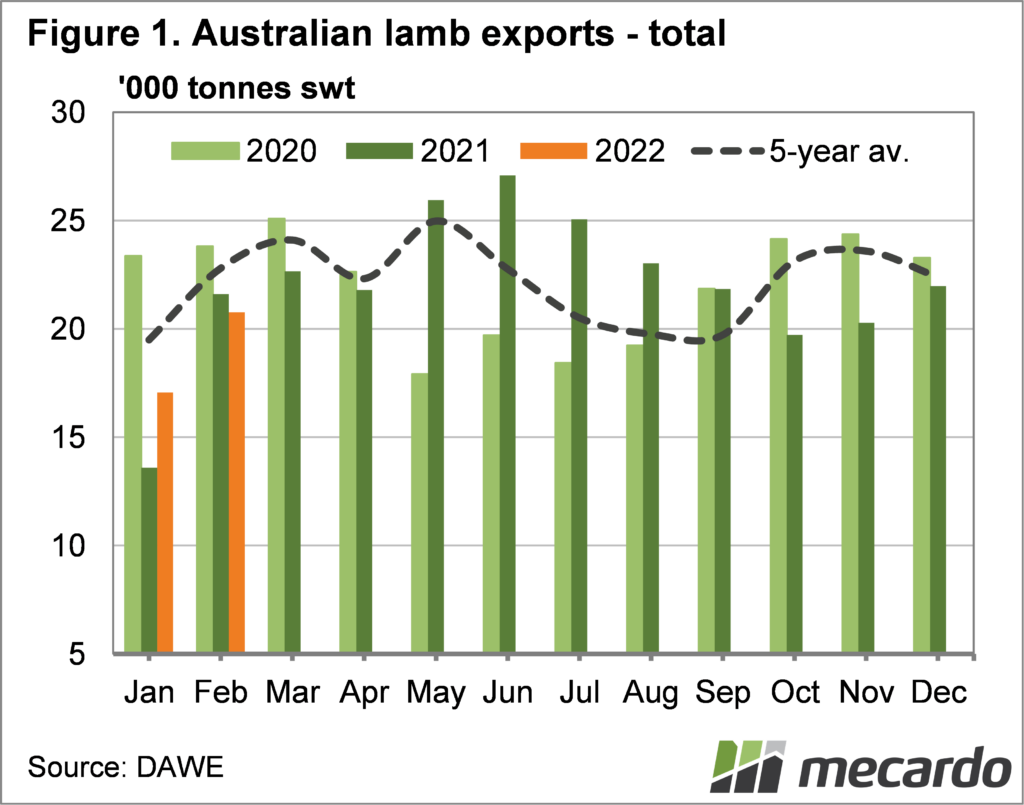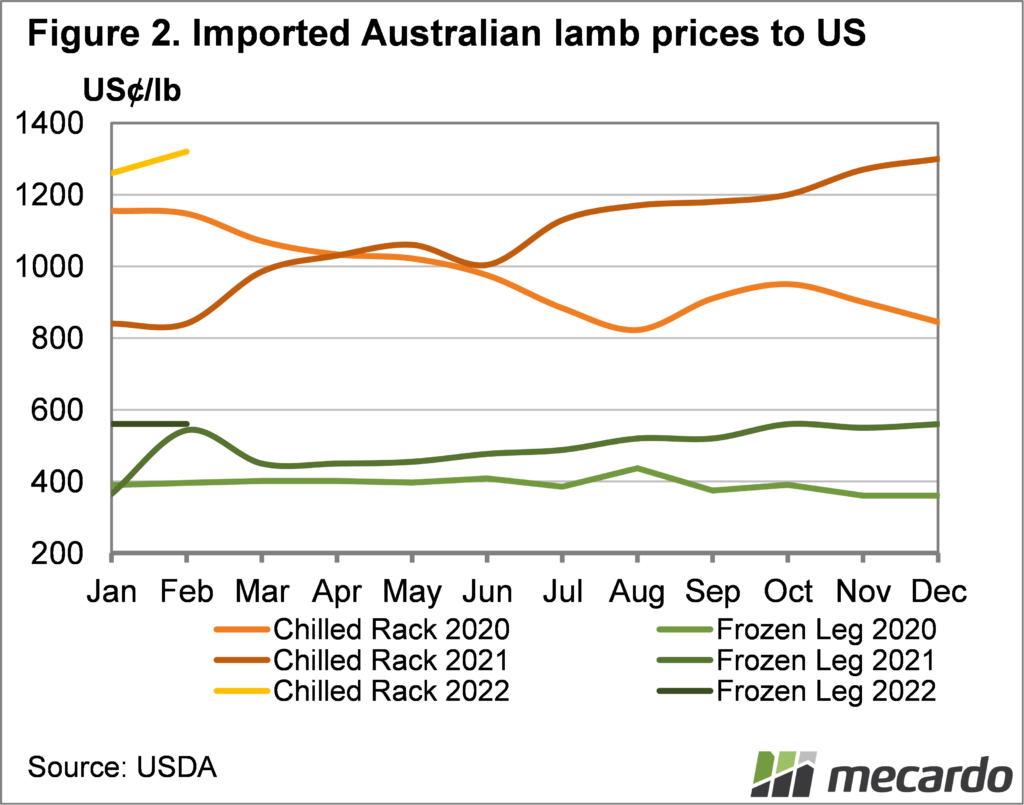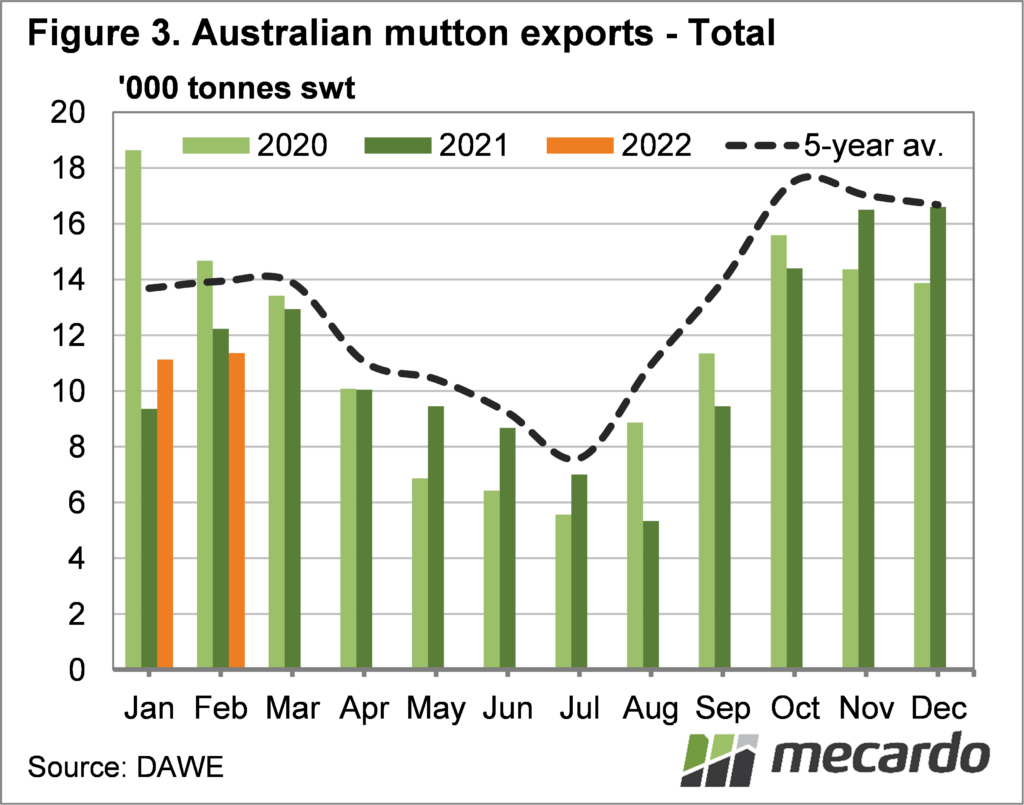The February export data released recently showed that demand for lamb and mutton in export markets continues to maintain it’s recent strength. Up until February we can see that the world still wants Australian lamb and mutton, but there are some economic headwinds coming.
The start of February seems like an age ago now, but most will remember we were still in the grip of the ‘Omnicron wave’ and the associated processor disruptions. Despite the production issues, lamb slaughter for the four weeks of February was very similar to the same time last year. It was, however, down 5.2% on 2020, way back ‘pre-covid’.
February lamb exports were up 22% on January, however, they were down 4% on February 2021. Figure 1 shows lamb exports were well back on 2020 and the five year average, but that is to be expected.
We have been talking about strong demand for lamb from the US market for some time, and it seems it continued in February. The US has taken 27% of the Australian lamb exported for the year to date, matching 2021 market share. In February lamb exports to the US were basically the same level as last year. It pinched market share from China, which exported 37% less lamb than in February 2021. China was still the second largest market.
Figure 2 shows why the US is demanding the largest market share. Export lamb markets continued to rise in the second half of 2021, and have gained more ground early in 2022. Both the Chilled Rack and Frozen Leg are now above pre covid levels of early 2020.
Racks at $13/lb in US terms equates to $40/kg in Australian dollars, and makes up around $64 of the value of an export lamb. This is up $26 on the same time last year.
Mutton seems to have borne the brunt of lower slaughter capacity in February, it was well down, being 10% lower than 2021. Figure 3 shows exports were down 7% year on year, and similar to January.
China remains the biggest market for mutton, despite being down 36% on February 2021. A number of smaller markets saw significant increases in mutton flows, with Malaysia up 69%, Taiwan 52%, Europe 175% and the Middle East 14%. Market diversification is a good thing.
What does it mean?
Strong volumes and higher prices are pretty good indicator of strengthening demand, and this is the case in the US for lamb. At least it was until February, but we all know about the economic issues posed by higher fuel prices, with increased freight costs and lower disposable income. There might be some offset with US lambs, which are largely grainfed, possibly becoming even more expensive.
‘Cheaper’ protein, like mutton, should see continued strong demand in export markets, and this could see the spread to lamb narrow.
Have any questions or comments?
Key Points
- February lamb and mutton exports were relatively strong and reflected slaughter rates.
- US lamb demand remains strong, with prices at record highs.
- Economic headwinds could see mutton demand increase, and lamb weaken.
Click on figure to expand
Click on figure to expand
Click on figure to expand
Data sources: MLA, ABS, DAWE















